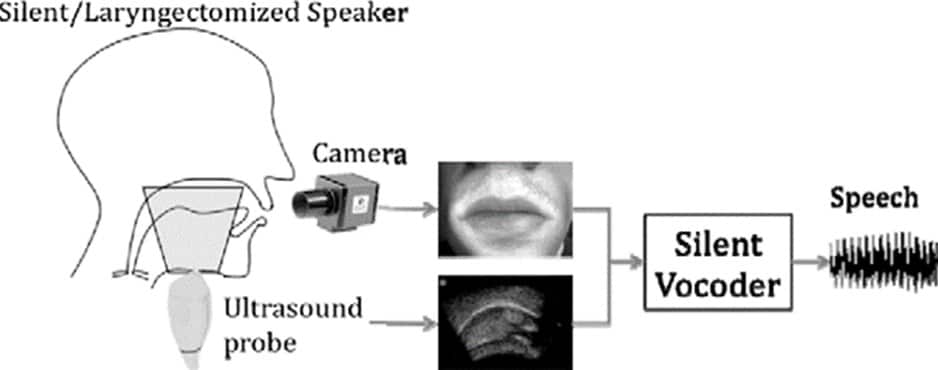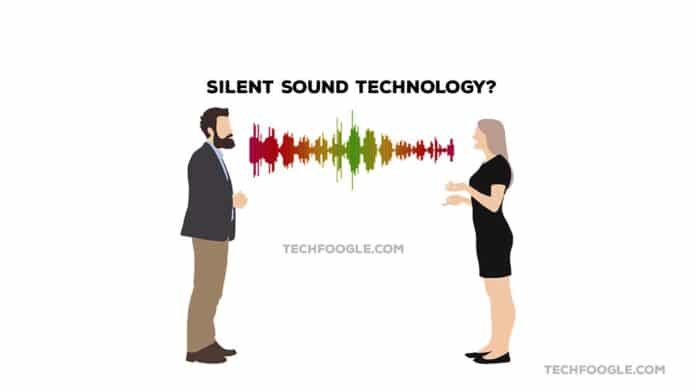Silent Sound Technology (SST) is an innovative technology that has been developed to address the issue of noise pollution and help individuals who cannot speak. Technology, which is being developed at Karlsruhe Institute of Technology, has the potential to revolutionize the field of communication.
Table of Contents
The Development of Silent Sound Technology
The development of Silent Sound Technology has been ongoing for several years, and the device is expected to be available shortly. The Karlsruhe Institute of Technology team has been working tirelessly to develop a device that can detect lip movements and convert them into sound speech that can be easily understood. This Technology has the potential to benefit millions of people around the world, especially those who are unable to speak due to various disabilities.
How Silent Sound Technology Works

SST works by detecting the electrical impulse generated by the movement of the lips. The device then converts this electrical impulse into speech that others can easily understand. The Technology is so advanced that it can even be used for silent calls, where users only need to move their lips to communicate without making noise.
While SST can be used for English, German, and French, it cannot be used for others. It is because languages like Chinese use different tones to convey different meanings, which makes it difficult for SST to interpret the language accurately.
Limitations of Silent Sound Technology
One of the main limitations of Silent Sound Technology is its language limitations. The Technology can only be used for languages that use a standard tone, which limits its usefulness for languages that use different tones to convey different meanings.
Despite this limitation, SST can still be useful for secret calls since the caller cannot see each other’s faces. It makes it ideal for situations where confidentiality is of the utmost importance.
(Also see: Instagram Search Demystified: How the Algorithm Works)
Potential Applications of SST
Silent Sound Technology has the potential to be used in a variety of applications in the field of communication. It can be used to help individuals with disabilities communicate more effectively, and it can also be used in situations where noise pollution is a problem. For example, SST can be used in public spaces such as airports and train stations to reduce the amount of noise pollution.
Future Implications of SST
The development of Silent Sound Technology has the potential to revolutionize the field of Technology. This Technology has the potential to change how we communicate and pave the way for other innovative technologies that can improve the lives of individuals with disabilities.
However, there are also potential ethical implications associated with the use of SST. For example, using SST in secret calls could be seen as violating privacy. It is important for developers to consider the potential implications of SST carefully and to ensure that it is used ethically and responsibly.
How does Silent Sound Technology (SST) work?
Silent Sound Technology is based on detecting and interpreting lip movements to generate sound speech. The device captures the lip movements of the speaker using a camera and then processes them to convert them into sound waves.
The lip movements are converted into electrical impulses sent to a computer for processing. The computer then converts the electrical impulses into sound speech that the listener can understand.
The SST technology has been designed to work in real-time, which means that the speech generated is immediate and can be heard by the listener as the speaker is speaking.
Applications of Silent Sound Technology (SST)
Silent Sound Technology (SST) is a game-changer in the world of communication, with a wide range of applications that can benefit individuals and organizations. For those who have lost their voice due to an accident, ageing, or other reasons, SST offers a new way to communicate without relying on text-based or visual communication alone.
In addition to being a lifeline for those who cannot speak, SST is also incredibly versatile. It has applications in the military, where it can be used to communicate sensitive or classified information. SST is also perfect for situations where you must make a call or attend a meeting in a quiet environment without disturbing others. Imagine speaking freely in a conference room or library without worrying about disturbing anyone else – that’s the power of SST.
Another advantage of SST is its ability to break down language barriers. With SST, a speaker can communicate in their native language, while the listener hears it in their language, whether German, English or any other language. This Technology makes it an ideal tool for astronauts who must communicate with people from different countries and backgrounds while on missions.
SST is a revolutionary technology that can potentially change how we communicate. It has diverse applications that can benefit people from different walks of life, from those who have lost their voice to military personnel, business executives, and astronauts. With SST, the possibilities are endless, and we can look forward to a more connected and inclusive world.
Limitations of Silent Sound Technology (SST)
While Silent Sound Technology (SST) is an innovative communication tool, it does have its limitations. One of the main drawbacks is that it may not be effective for languages where different tones convey different meanings, such as Chinese. SST relies on electrodes that capture the speaker’s facial muscles, which may not accurately reflect the tonal variations in some languages.
Another limitation of SST is that for it to work optimally, the electrode must be inserted into the speaker’s face. This Technology may be uncomfortable for some individuals and cause discomfort over time. Additionally, because SST is based on capturing muscle movements, it may not be able to capture the emotional nuances of speech, resulting in a robotic-sounding voice.
While SST has its benefits and can be a game-changer for those who have lost their voice, it does have limitations that must be considered. While it may not be suitable for all languages or individuals uncomfortable with the electrode insertion, SST can still be an effective communication tool in many situations. It’s important to weigh the pros and cons of SST before deciding to use it.
Conclusion
Silent Sound Technology is a groundbreaking technology that has the potential to revolutionize the way we communicate. It can help people unable to speak or hear to communicate effectively and can also be used for noise-free and secret communication.
However, the Technology has limitations, including language compatibility, accuracy, and security risks. As Technology evolves, we may see improvements in SST that may overcome some limitations.
Frequently Asked Questions
Q1. Can Silent Sound Technology be used for any language?
Ans. No, Silent Sound Technology can only be used for languages based on lip movements, like English, German, and French.
Q2. Can SST be used for secret communication?
Ans. Yes, SST can be used for secret communication since the speaker does not have to speak out loud.
Q3. Is SST technology accurate?
Ans. The accuracy of SST is dependent on the quality of the camera and the computer processing power. Poor-quality cameras and computers may lead to inaccurate lip movement detection and sound speech generation.
Q4. What are the applications of SST?
Ans. The applications of SST include communication for the mute and hearing impaired,













